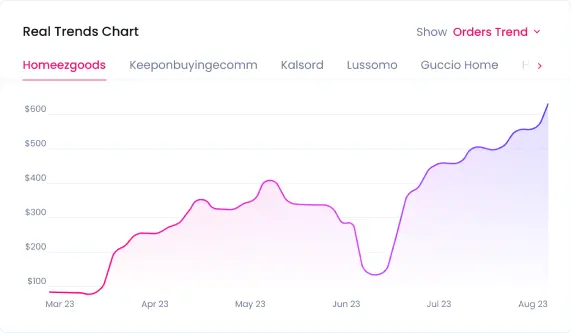How to Start Dropshipping: 8 Steps To a Profitable Business
Contents

If you are looking to start a dropshipping business, this is the detailed step-by-step guide you need.
Dropshipping is financially rewarding. But that doesn’t mean you will start seeing money as soon as you start. Heck, you may not even make a single sale in your first month of starting a dropshipping business.
But on the bright side, if you are willing to work, strategize, and execute your dropshipping business right, you can make a killing. Of course, there will be competition.
A lot of people are getting into the dropshipping and ecommerce industry every day. We checked Google Keyword Planner and discovered there are about 10k to 100k monthly searches for the keyword “how to start dropshipping.”
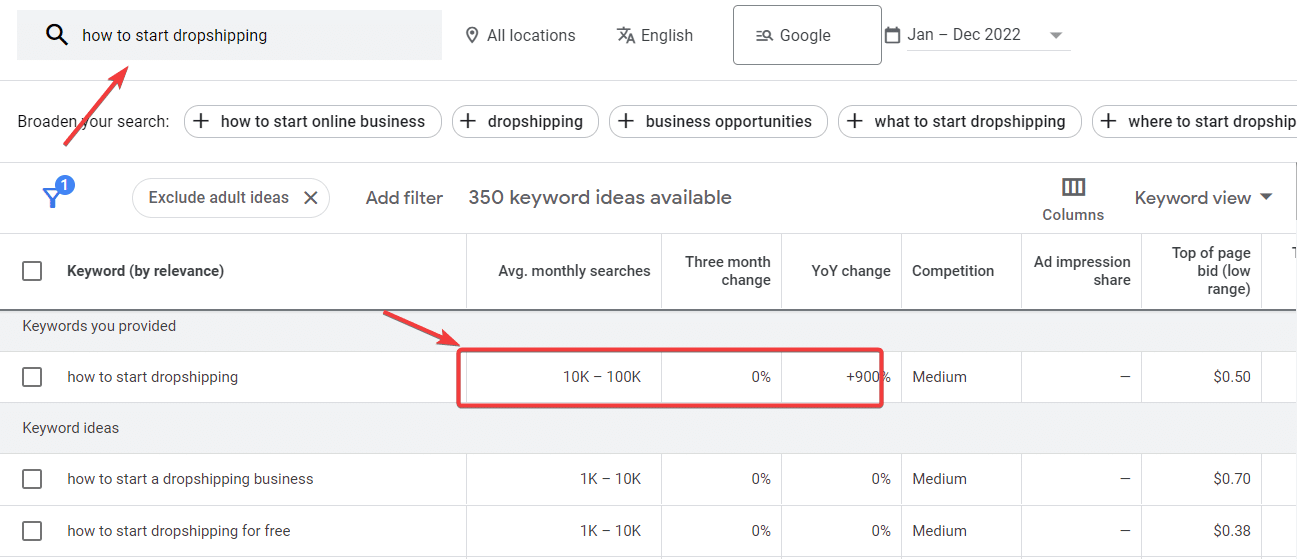
Key Takeaways
How To Start Dropshipping? A Step By Step Guide
From our experience, starting a dropshipping business is rewarding, but it’s never easy. That said, here are steps to take to improve your odds of success when getting into the dropshipping business.
1. Market Research
You want to start a dropshipping business, right? Have you figured out the product to sell yet?
It’s about time you gave it some serious thought because the success of your dropshipping business depends largely on your choice of product. So you can’t afford to miss it here.
We see many wannabe dropshippers fuss about selling products they are passionate about. Some even go as far as insisting on selling only unique products with very little competition.
The truth is – passion is never enough – you need to sell products people are willing to buy.
For example, if you are passionate about gym equipment, you will have difficulty selling them. The reason is that they are just too heavy, and handling them can be complicated and expensive to fulfill.

And going for products with little to no competition is a bad idea because they hardly sell.
As such, you will want to try your hands on clothing and home accessories, home decor, beauty and personal grooming niches. These are evergreen niches with consistent demand, even though the competition around them is substantial.
So, how do you figure out the exact dropshipping niche and products to sell to make the most sales and profits?
The easiest way to find trending products is through Sell The Trend.
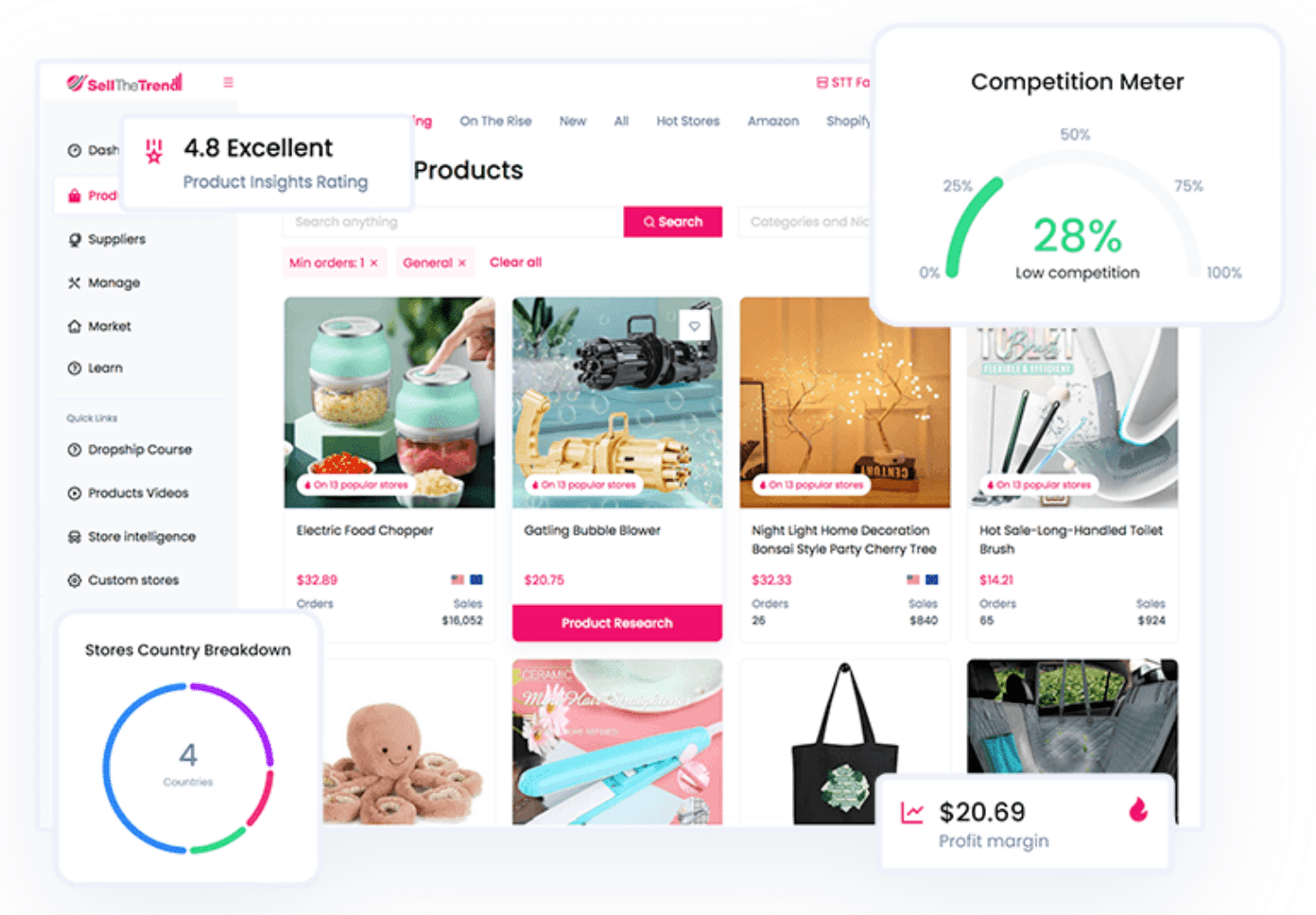
Sell The Trend is the best dropshipping product research tool. Along with providing the top and trending products for you to pick for your store, the tool also gives you the competition meter, product insights rating, and even profit margin.
Another easy way is to follow our Winning Products Friday blog, where we share trending products that are selling hot at the moment every Friday.
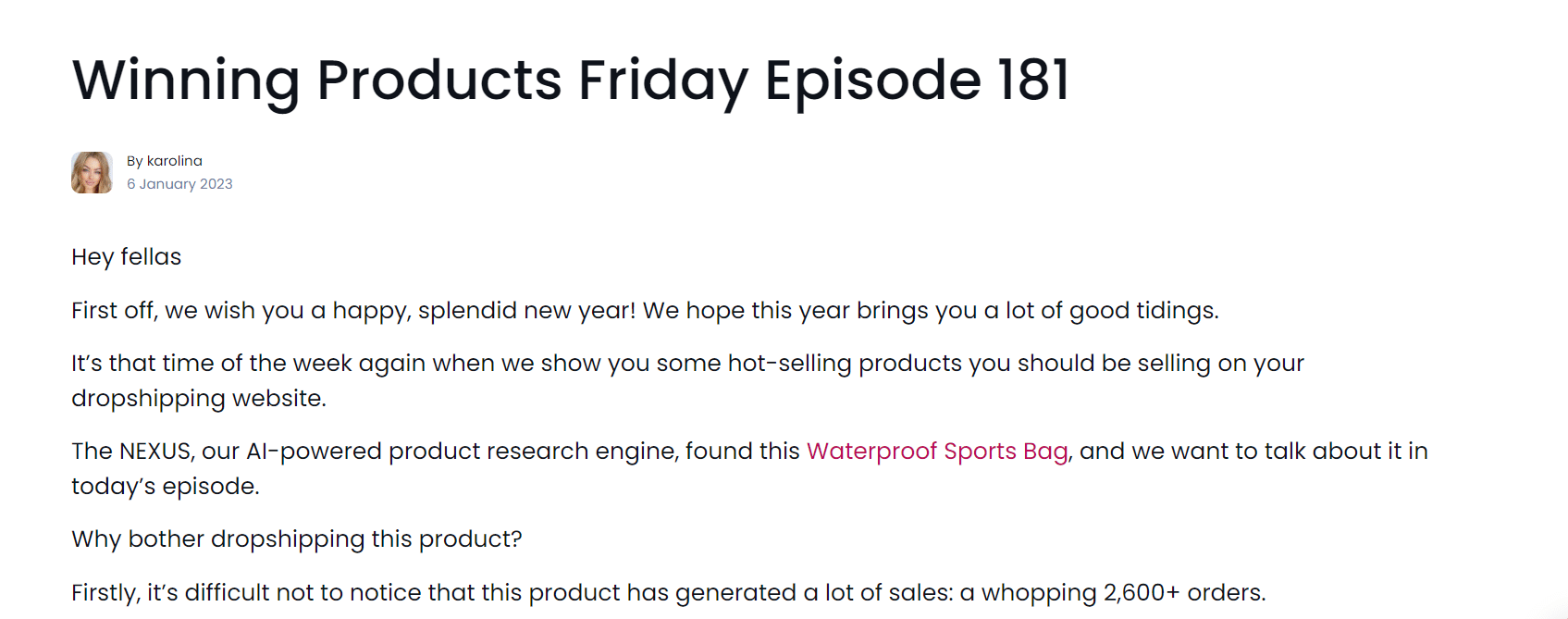
Doing so will give you insights into profitable products that are in demand and can make you a fortune.
Better yet, you can automate your entire product research by leveraging our AI-powered product research engine, The NEXUS Product Explorer.
The NEXUS enables you to find winning products in auto-pilot mode, freeing you enough time to focus on other important aspects of your business.
Alternatively, you can do full-blown market research by leveraging research tools like Google Trends and Google Keyword Planner.
These tools let you see how popular a product you are looking to sell online is, as well as the demand trend. And they are free!
In all, you will want to go for products that:
- Attractive and wows. People love to buy products that tickle their fancy
- Solves a problem. A product is as valuable as the problem it can solve
- Has an emotional connection. You will want to sell products people can easily buy on impulse.
- Has a good profit margin. That’s why you are getting into dropshipping after all. High retail price and low wholesale price.
- Not easily available. Selling products shoppers can easily purchase from a convenience store is a bad idea.
2. Study Your Competitors
You don’t necessarily need to reinvent the wheels when getting into dropshipping. We have been doing this for years, and all you have to do is see what your competitors are doing in the online business space and then improve on it.
When spying on your competitors, you will want to find out their pricing strategy, marketing tactics, suppliers, and every piece of information that can help you build a smart marketing strategy.
Thankfully, competitor research is anything but hard.
You can start by doing a quick Google search.
But how exactly do you find dropshipping stores selling the product you are targeting?
Well, one easy way to do so is by suffixing “myshopify” to your search term.
For example, to find stores selling sundresses, enter “sundress myshopify” into Google.
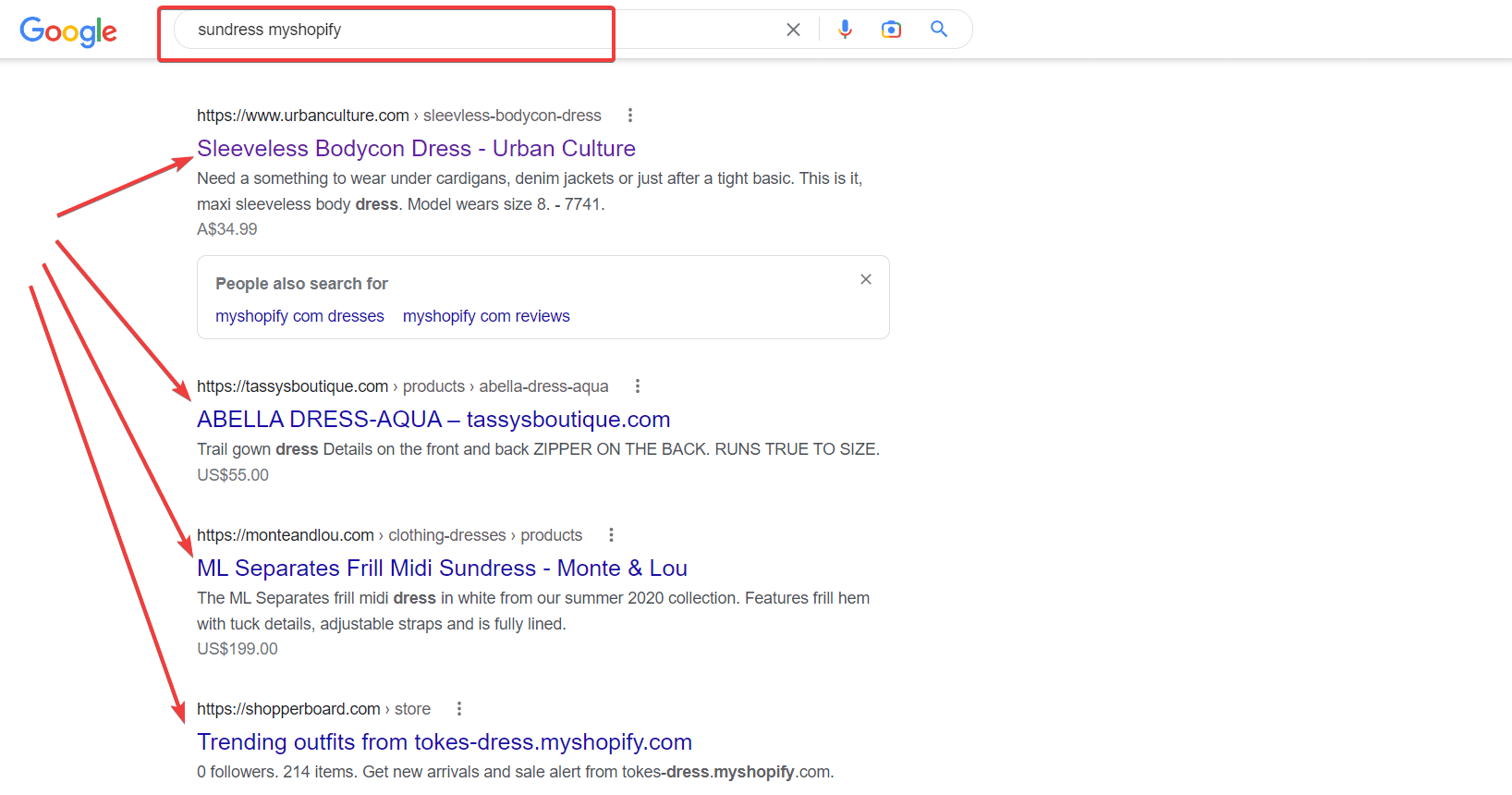
Alternatively, you can take your competitor research to Instagram by using a hashtag.
For instance, to find stores selling the same sundress, enter #sundress in the Instagram search bar and then check out the accounts and posts that show up. You can do the same with TikTok as well.

Other tools you can use include Spyfu, Similarweb, Buzzsumo, and many more.
Better yet, you can use our very own Store Intelligence tool that makes it all too easy to spy on your competitors to see what they are selling and doing.
3. Find a Reliable Dropshipping Supplier
Once you’ve figured out the product you want to sell and snooped around to see what your competitors are doing, the very next thing you will want to do is to find suppliers to source products from.
From our dropshipping experience and what we have seen over the years in this biz, finding dependable suppliers is the most crucial step to the success of your dropshipping business.
Why so?
Working with a reliable supplier means your customers will always get quality products in a timely manner. The reverse would be the case if you work with a dubious supplier.
Also, with a reliable supplier, you can sell the product at competitive prices. You want the supplier to provide quality products at a great price.
How do you know if a dropshipping supplier is reliable?
One surefire way to do so is by checking for past customers’ reviews on online marketplaces like Aliexpress.
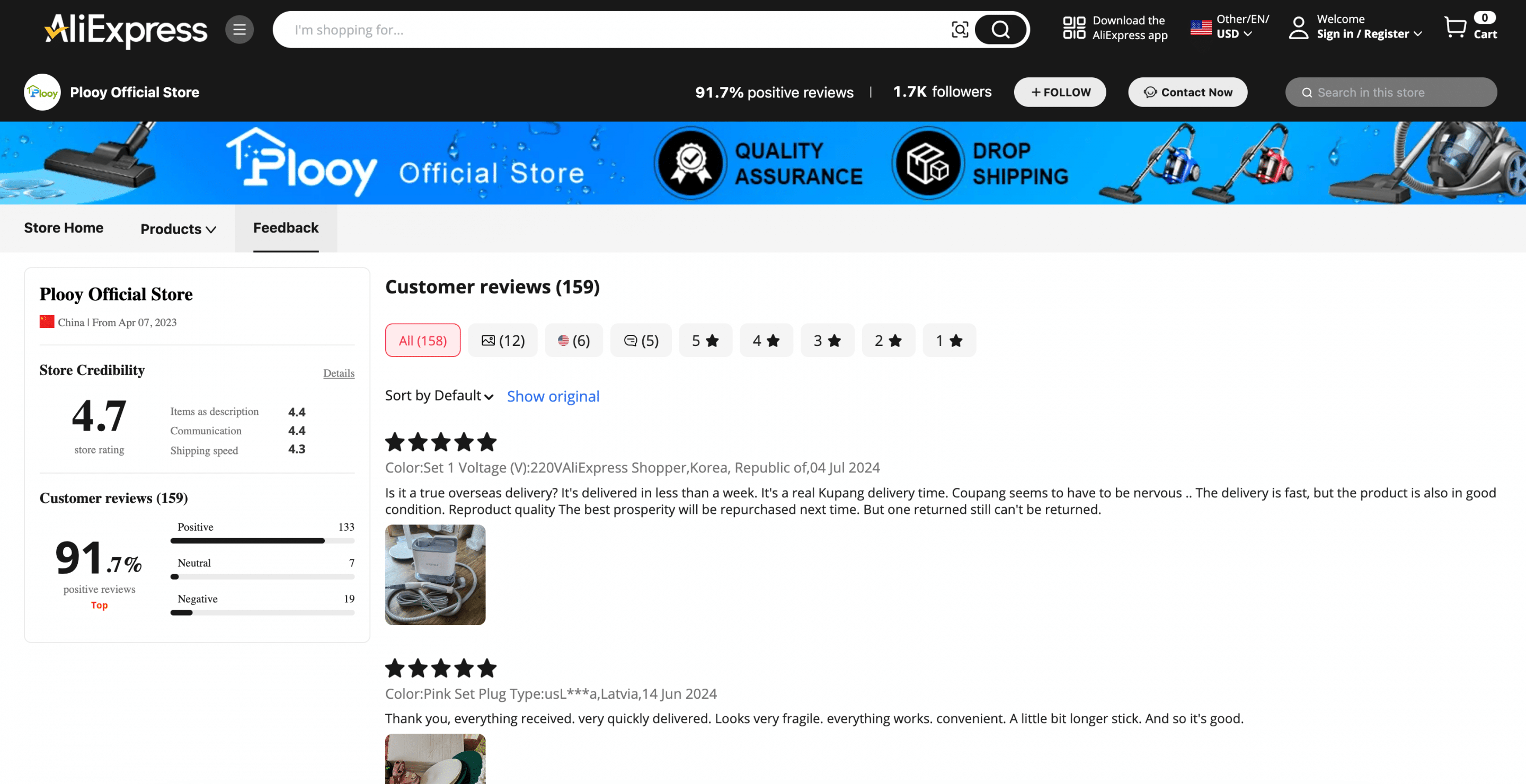
Alternatively, you can order a product yourself to see how quickly and effectively the dropshipping supplier you are looking to work with delivers.
The best way to do this is to use Sell The Trend to choose the best suppliers for your dropshipping business. You can browse suppliers from the USA, Europe, and internationally to find the right match for you at the best price and quality.
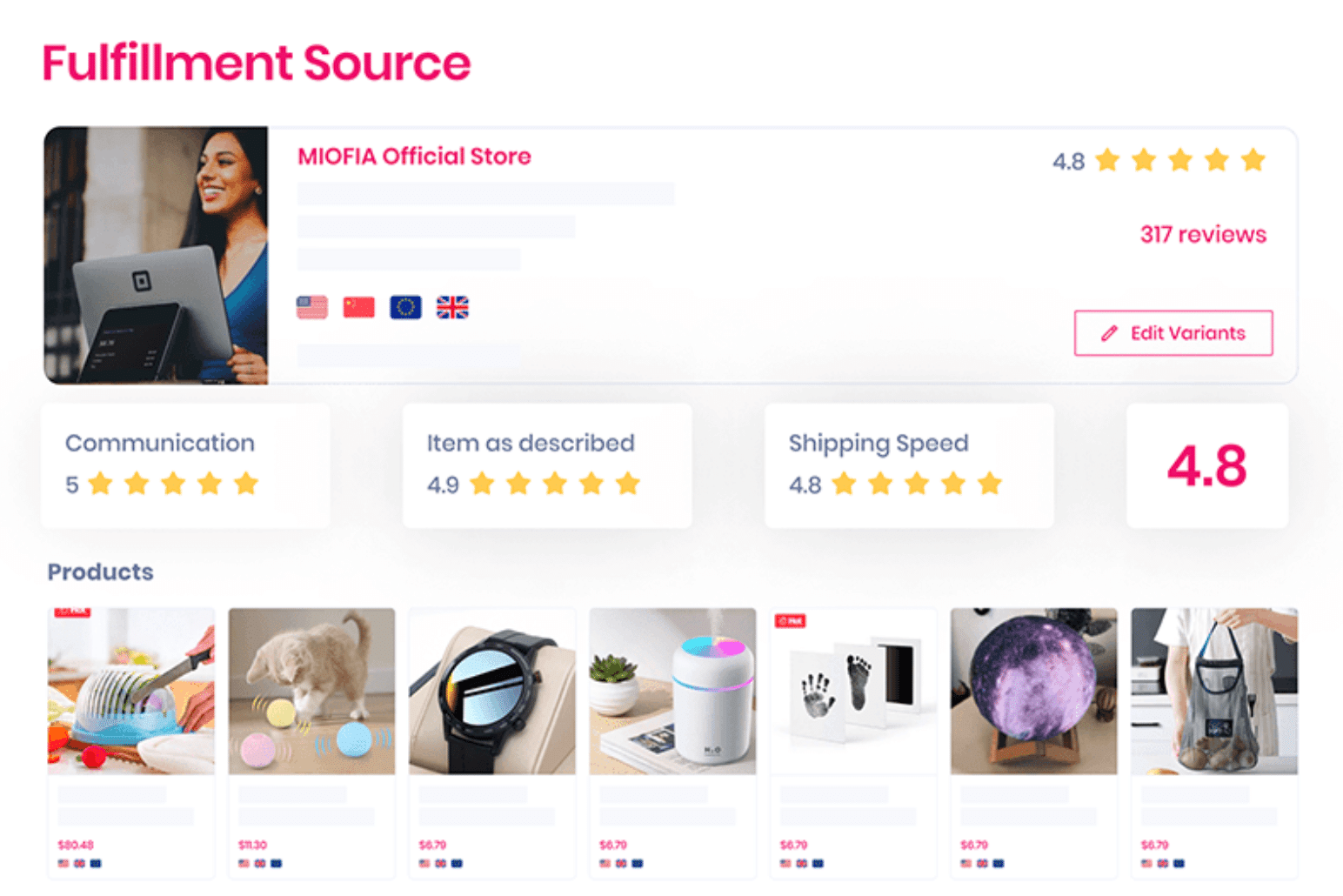
It is also essential to keep personal and business finances separate when dealing with dropshipping suppliers. Mixing these finances can lead to confusion in accounting, increased vulnerability during audits, and potential legal issues. By maintaining distinct financial accounts, you ensure better financial management and protect your personal assets.
4. Figure Out Your Platform and Set Up an Online Store
Dropshipping is hard work. We have been doing it for years and there is always too much to do in too little time. You have to find the right products, connect with the right suppliers, promote your ecommerce store, fulfill orders, manage your finances….the list is endless.
Attempting to manage all these tasks manually will only make your workflow inefficient and your life nightmarish.
This is why it’s important to find the right online selling platform for your e-commerce store.
You need a channel that makes it easy to import products into your online store, fulfill orders, manage customer communication, track your finances, etc.
In short, you need a platform that does the heavy lifting for you, while you focus on what’s more important: growing your ecommerce store.
Lucky for you, there are several dropshipping platforms out there you can try. They include Shopify, Wix, WooCommerce, BigCommerce, etc.
The easiest and the best way to set up your store is through SellShop.ai.
With SellShop.ai, you can launch your online store instantly with minimal setup and no technical expertise required.

Another option is to use social media channels like Facebook Market or an Instagram page as your selling channel. These cost almost nothing. However, their dropshipping capabilities are severely limited.
Also, set up the business, an LLC (Limited Liability Company) to gain personal liability protection, obtain an employer identification number (EIN), a separate bank account, and take care of any other business structure setups. It provides the necessary business credentials.
5. Market Your Products
From our experience, your success as a dropshipper depends largely on your ability to sell online. Sales sustain every business model. Without sales, your dropshipping business will tank even before it starts.
But this shouldn’t scare you because even guru-level dropshippers started somewhere. You, too, can.
There are many marketing strategies you can try your hands on. More often than not, the right strategy boils down to how much you are willing to spend on ads and promotions.
SEO (Search Engine Optimization) is one way. SEO is a digital marketing concept that involves making your website findable on search engines like Google by filling your website pages with relevant keywords/search terms searchers use online.
Though free and effective, SEO takes a lot of time to yield results. Plus, it requires a good deal of consistency to rank high on search engines.
If don’t have the luxury of time and got some cash to spare, consider running ads on social media platforms like Facebook or Instagram. It will take a while to get the hang of it – and lose money in the process – but it will be well worth it in the end.
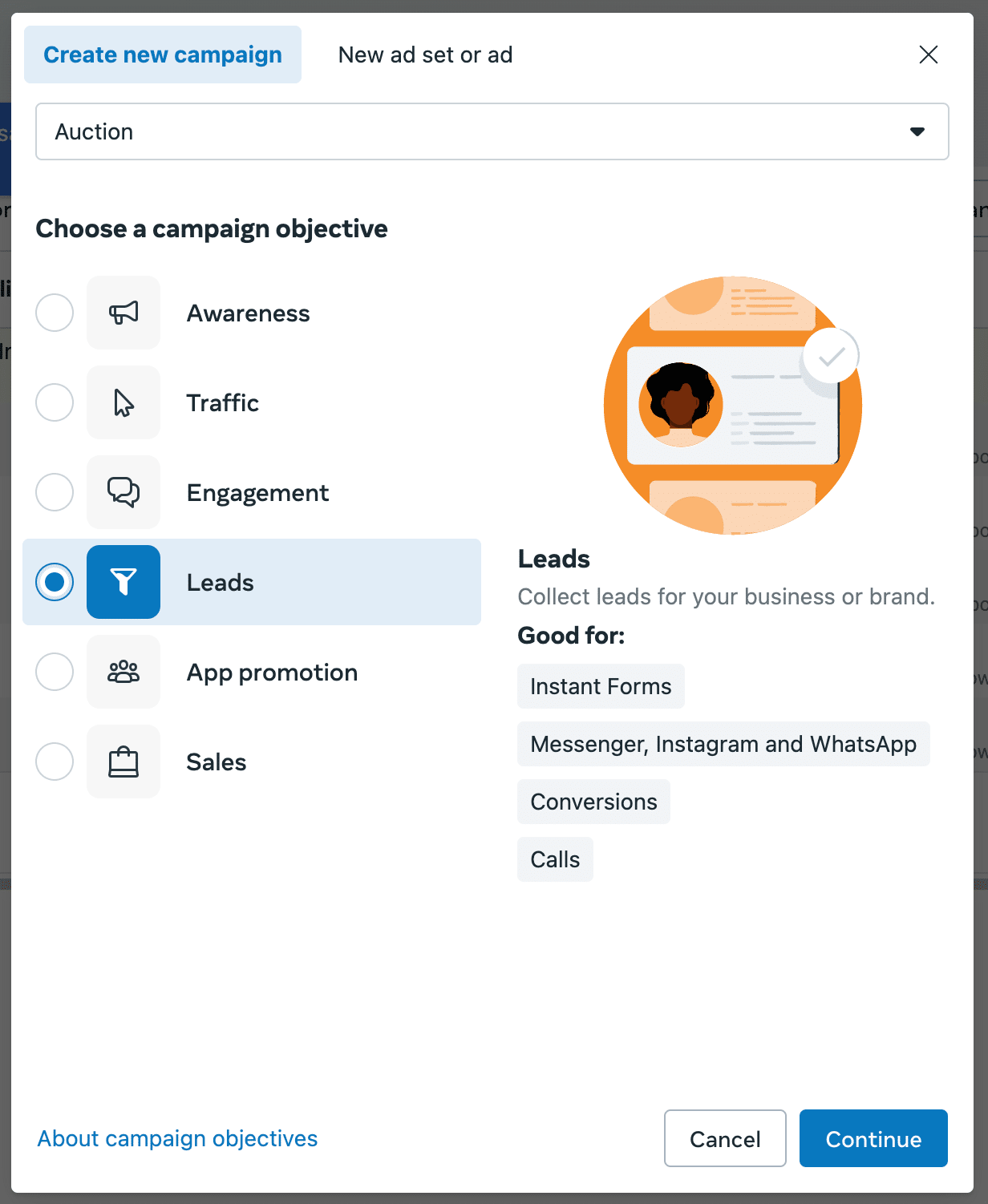
Lucky for you, we offer an immersive Facebook ads course, where we show you the ins and outs of running paid ads that convert. You don’t have to trial-and-error and keep losing money in the ads anymore.
You can also check out our no-nonsense Dropshipping course, which will help you transform from a rookie to an expert dropshipper.

If running paid ads on Facebook isn’t ideal, you can try influencer marketing. This requires enlisting the help of influential people to promote your product, often for a fee.
Platforms like Grin and Dovetale can make it easy to connect with the right influencers.
By right influencers, we mean influencers whose audience and ideals align with yours.
Other marketing strategies you can try include video marketing via YouTube and TikTok, Google ads and PPC, email marketing, etc.
Additionally, it’s crucial to understand the regulatory requirements for an online business model, particularly the necessity of collecting sales tax based on state laws. As a dropshipper, you must register as an online retailer and obtain a sales tax ID to ensure compliance and streamline the management of your tax obligations.
6. Sort Out Product Returns
Look, we hate to break it to you, some of your customers will return their orders no matter how awesome the products are. This is always the case from what we have examined in tons of dropshipping experience.
Although this is not to scare you, product return is one of the ugly sides of dropshipping—and e-commerce in general—that you can’t escape.
In fact, studies suggest that as many as 30% of all online purchases eventually get returned for a myriad of reasons.
So, instead of dreading or running from it, the best thing to do is to prepare for it, especially when sales start coming in.
One easy way to ready your online store for return is by creating and publishing your return policy on your website. If this seems like too much work, consider using a return policy generator app like TermsFeed.
Also, coordinate with your dropshipping supplier on product returns. You might have to bear the shipping costs for these returns. Talk to your suppliers beforehand on how to deal with these returns.
7. A/B Test
Imagine this scenario:
After spending $1000 on Facebook ads, you realize that you only made $125 in sales from it.
Your natural instinct at this moment would be to quit Facebook ads – or even dropshipping altogether.
Don’t!
The truth is, your Facebook ad sucks.
And instead of quitting, A/B test.
A/B testing refers to the practice of testing two variants of something to see which works best.
So when you apply this to the scenario above, instead of putting all $1000 in Facebook ads, you can split the budget into 4 places, putting some in Google, Banner, and Instagram ads to see which works best.
And go even one step further. Within each platform, constantly A/B test ads. Most platforms provide pre-built A/B test options. If not, you can always manually set it up.
You can A/B test literally every component of your marketing campaign and even your website. For example, if you realize your website isn’t converting as you want, you can A/B test by changing your website copy, colors, CTA (call to action) buttons, etc.
8. Keep Trying
Did you know that the average success rate of dropshipping is about 10% to 20%. This means only about 1 to 2 in every 10 people that get into dropshipping eventually make a sale.
As you can see, the odds are not particularly stacked in your favor. You will likely not make the kind of sales you are looking for in your first year of getting into dropshipping.
But instead of giving up or venturing into something else, stick it out. Try a different approach. Sell a different product if possible. But by all means, keep trying.
This means many people are interested in this business model, so you can expect a lot of competition.
We are certainly not trying to discourage you from getting into dropshipping; just trying to ensure you get your perspective right before getting into it.
You can still make it big with dropshipping. But it might take time and lots of effort from your side.
How Can I Start A Dropshipping Business For Free?
You can start a dropshipping ecommerce business for free without any upfront capital. After all, that’s what makes dropshipping attractive in the first place. Where you will spend money is in setting up an online store and promoting your products.
Even so, you can still start your own dropshipping business on a zero budget by leveraging lots of free tools and marketing channels and sell products online.
For example, for a limited time you can set up an online store for free by leveraging SellShop, our innovative website builder tool that lets you build elegant-looking websites without writing any code.
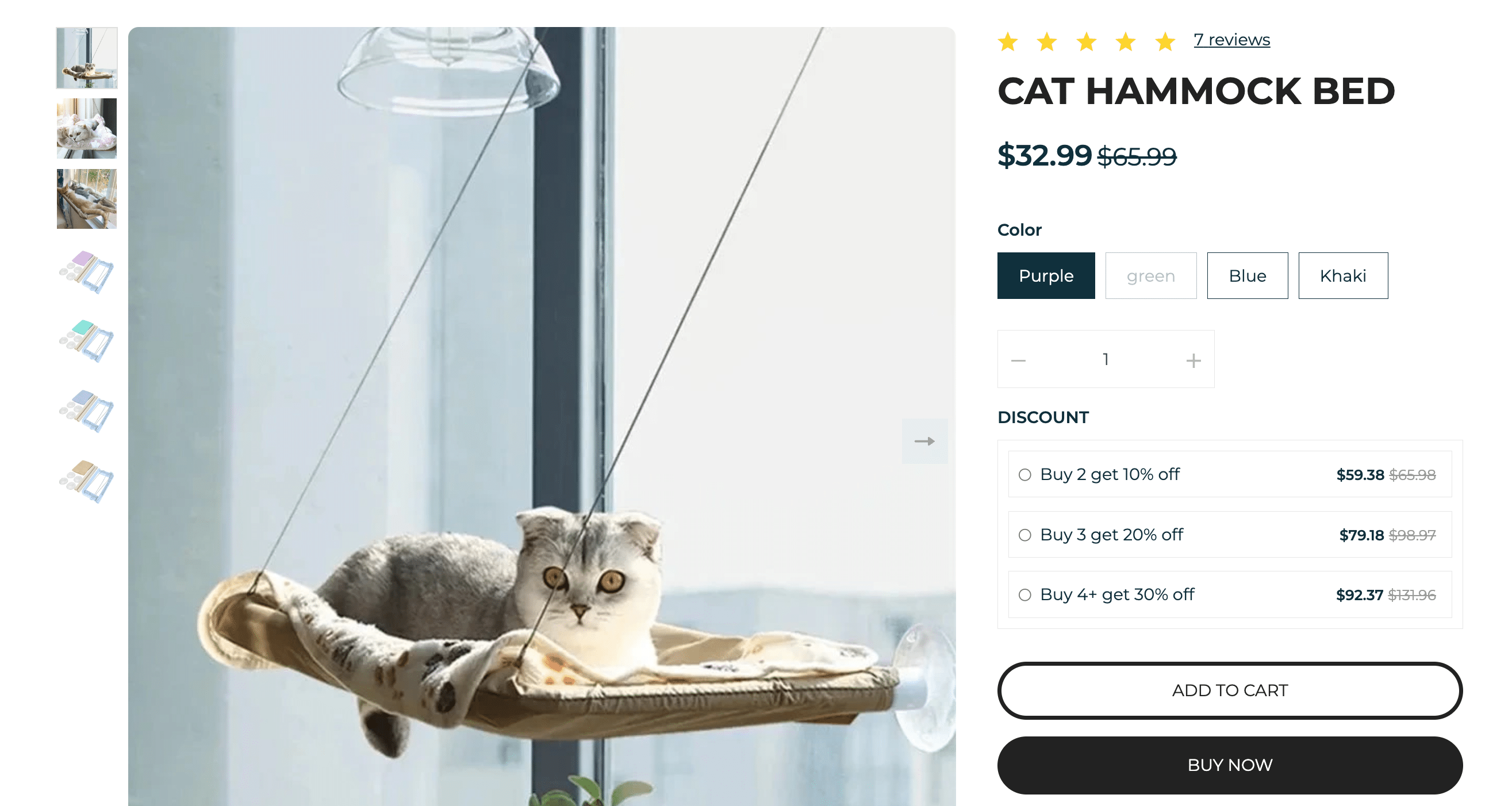
Better yet, you can set up your dropshipping store on the Facebook marketplace, which is completely free. If Facebook doesn’t work, try Instagram.
Once you’ve set up your store for free, the next thing you will want to do is to find suppliers. Thankfully, you can do this easily by checking in Aliexpress.
After that, the next step is to start promoting your products by leveraging free marketing channels like SEO by posting loads of articles that contain your target keywords. The more articles you post, the more visibility your store will get.
Posting your products on Instagram and Facebook can also help, but you will need a ton of engaged followers for this to work.
As you can see, starting and running a dropshipping business for free is possible; but can be insanely time-consuming.
So be prepared to spend money, though not much, if you don’t have that much time to spare and want to see instant results.
How Much Does It Cost to Start a Dropshipping Business?
We’ve established starting a dropshipping business for free isn’t always the best thing to do. You just have to spend money if you are really serious about starting a successful dropshipping business.
The question then is, how much money do you need to start a dropshipping business?
There is no definite answer to this question. But we will give you a brief breakdown of the cost to give you a fair idea of how much to budget when looking to start a dropshipping store. Of course, this is assuming you have a computer and an internet connection already.
So here it goes:
- Setting up a website: $49.99 if you use Sell The Trend, $9.95/month if you choose to use WooCommerce instead, and host your website on Bluehost.
- Domain name: $14/annum (optional though)
- Plugins and apps to help your business ($35/month. Could be way more)
- Themes to make your website look good (starting from $79/annum for WooCommerce, and $300 for Shopify, but one-off payment). You can get some good themes for free though.
- Facebook ads: This is totally dependent on your budget, but $50/month is a good starting point.
When you do the math, everything comes out to roughly $100 to $150/month, give or take.
It is also important to open a separate business bank account to manage your finances effectively. Using a dedicated account helps in tracking income and expenses, and ensures financial transparency. This practice prevents mixing personal and business finances, which can help avoid potential issues with the IRS.
Luckily, you can save yourself all the hassles and save money by launching your ecommerce business store with Sell The Trend. For as low as $49.97 per month, you can set up online stores, import products from a global marketplace like Aliexpress with a few clicks of the button, fulfill orders, spy on your competitors, and many more.
Additional Tips for Starting a Successful Dropshipping Business
Start with a Small Budget
One of the benefits of the dropshipping business idea is that you can start with a relatively small budget. However, it’s important to be realistic about the costs involved. While you can technically start for free, investing in your business will yield better results.
Focus on Customer Experience
Customer experience should be at the forefront of your business model. From easy navigation on your website to prompt customer service, every interaction with your brand should be positive. Happy customers are more likely to leave positive reviews, which leads to repeat customer purchases.
Leverage Automation Tools
As your business grows, managing everything manually can become overwhelming. Use automation tools to streamline tasks like order processing, inventory management, and email marketing. This will free up your time to focus on scaling your business structure and generate higher profit margins.
Bonus tip: Buy a Dropshipping Store
Starting a dropshipping store from scratch isn’t always ideal. This is particularly true if you have a full-time job and want to make passive income from dropshipping without putting mammoth hours into it.
What to do? Buy a store.
Buying saves you the trouble of starting from scratch and the mistakes that go with it.
Flippa and Motioninvest are some good places to find online stores to buy.
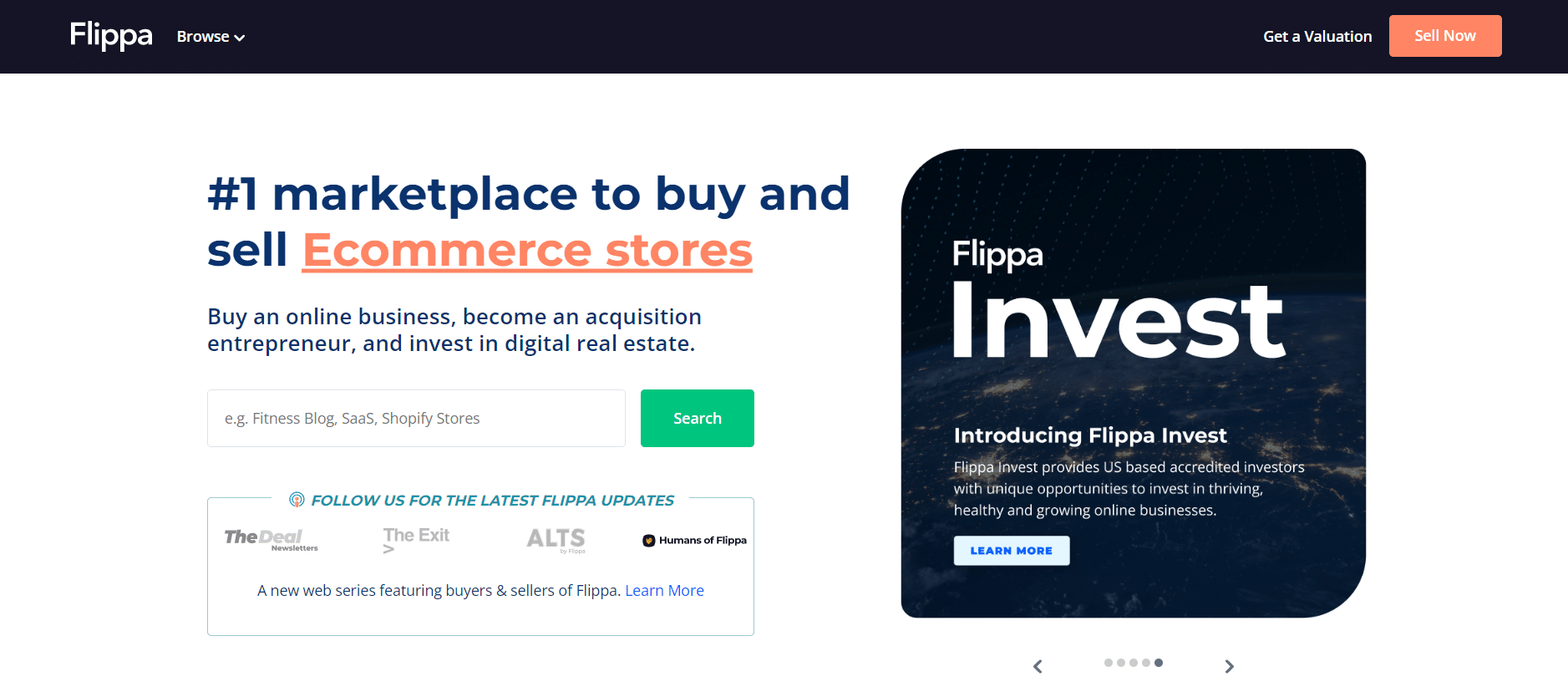
Here are some important factors to take into account when looking to buy a dropshipping store.
- Domain age: the older the better.
- Performance: you will want to buy a store that has sizable traffic and good conversion
- Niche: buying a store in an unpopular niche will only drain away your money
- Mobile friendliness: you are better off buying a website that is mobile-friendly than one that’s not.
Advanced Strategies for Scaling Your Dropshipping Business
Once you’ve set up your dropshipping ecommerce business and are starting to see some traction, the next step is scaling. Scaling is where you move beyond the basics and focus on growing your business to generate more sales, increase profits, and establish a stronger brand presence.
1. Diversify Your Product Range
One of the simplest ways to scale your dropshipping business model is to expand your product listings. By offering more products, you can attract a broader target audience and increase the chances of repeat purchases.
Related products:
Start by adding products that are related to what you’re already selling. For example, if you’re selling fitness equipment, you could add workout apparel or supplements to your store. Research with Google Trends, Sell The Trend again.
Seasonal products:
Consider adding seasonal items to capitalize on trends. For example, during the holiday season, you can offer holiday-themed products or gift bundles.
High-ticket items:
Once you have a steady flow of traffic, you might want to introduce higher-priced items. These products can significantly increase your average order value and profit margins.
Expanding your product range requires careful planning and research to ensure you’re not overwhelming your customers with too many options. Focus on products that complement your existing offerings and meet the needs of your target audience.
2. Optimize Your Conversion Rates
Driving traffic to your website is important, but converting that traffic into sales is crucial for growth. Ignoring sales data is one of the biggest mistakes one can make. Conversion rate optimization (CRO) involves making small changes to your website to improve the percentage of visitors who make a purchase.
Improve website speed:
A slow website can frustrate potential customers and increase bounce rates. Use tools like Google PageSpeed Insights to identify and fix issues that could be slowing down your site.
Simplify the checkout process:
A complicated or lengthy checkout process can lead to cart abandonment. Ensure your checkout is streamlined, with as few steps as possible. Offering guest checkout can also reduce friction.
Enhance product pages:
Your product pages should be clear, informative, and visually appealing. Use high-quality images, detailed descriptions, and customer reviews to build trust and persuade visitors to buy.
Test and tweak:
CRO is an ongoing process. Use A/B testing to experiment with different elements of your site, such as headlines, call-to-action buttons, and product placements, to see what drives the most conversions.
By continuously optimizing your website, you can maximize the return on your marketing efforts and increase your sales without needing to drive more traffic.
3. Expand into New Markets
As your business grows, consider expanding into new markets to reach a larger audience. This could involve selling in different geographical regions or targeting new customer places.
International expansion:
If you’re primarily selling in one country, consider expanding to other countries. This requires research into international shipping, taxes, and regulations, as well as localizing your website for different languages and currencies.
Target new demographics:
Analyze your current customer expectations and identify potential new demographics that could benefit from your products. For example, if you’re selling women’s clothing, you might consider adding a men’s or children’s line.
Multi-channel selling:
Don’t limit yourself to just one platform. Explore selling on multiple platforms like Amazon, eBay, or Etsy to reach different audiences. Each platform has its own set of customers and can provide additional revenue streams.
Expanding into new markets can be challenging, but it also offers significant growth opportunities. Approach expansion strategically to ensure you’re prepared to meet the demands of a larger and more diverse customer base.
4. Invest in Brand Building
Branding is a powerful tool that can differentiate your business from competitors and build customer loyalty. A strong brand can also allow you to charge premium prices and reduce your reliance on paid advertising.
Develop a unique brand identity:
Your brand identity includes your logo, colors, typography, and overall aesthetic. It should reflect your values and appeal to your target audience. Consistency across all touchpoints—your website, social media, packaging, etc.—is key.
Tell your brand story:
Your brand story is what makes you unique. Share your journey, mission, and the reasons behind your dropshipping products. This helps customers connect with your brand on an emotional level.
Engage with your community:
Building a loyal community around your brand can drive repeat business and word-of-mouth marketing. Engage with your audience on social media, create valuable content, explore marketing channels like influencer marketing, and offer exceptional customer service.
Offer branded products:
Consider private labeling or custom packaging to create a more premium experience. Branded products not only increase perceived value but also strengthen customer loyalty.
Investing in your brand can lead to long-term growth and stability, as customers are more likely to return to a brand they trust and resonate with.
5. Leverage Data and Analytics
Data-driven decision-making is crucial for scaling in dropshipping companies. By analyzing data, you can gain insights into customer behavior, identify trends, and make informed decisions to drive growth.
Use Google Analytics:
Google Analytics provides a wealth of information about your website traffic, including where your visitors are coming from, what pages they’re viewing, and how long they’re staying on your site. Use this data to optimize your marketing efforts and website content.
Track key metrics:
Monitor important metrics such as conversion rate, average order value, customer acquisition cost, and customer lifetime value. These metrics will help you assess the your business model and identify areas for improvement.
Implement customer segmentation:
Segment your customers based on their behavior, demographics, and purchase history. This allows you to tailor your marketing messages and offers to different groups, increasing the effectiveness of your campaigns.
Automate reporting:
Use tools like Shopify’s built-in analytics or third-party apps to automate reporting and get real-time insights into your business model and performance.
By leveraging data and analytics, you can make smarter decisions, optimize your operations, and uncover new opportunities for growth.
Common Pitfalls in Dropshipping and How to Avoid Them
While dropshipping business model offers many advantages, it also comes with its own set of challenges. Being aware of these common pitfalls can help you avoid them and increase your chances of success.
1. Overreliance on One Supplier
Relying on a single dropshipping supplier for all your products can be risky. If the direct source supplier experiences delays, stock shortages, or quality issues, it can directly impact your business.
Solution: Work with multiple suppliers for the same product. This not only reduces risk but also gives you leverage in negotiations. Additionally, having other sellers and suppliers ensures you can maintain continuity in case of any disruptions.
2. Ignoring Customer Service
Customer service is often overlooked in a dropshipping business because you don’t handle the products yourself. However, providing excellent customer service is essential for building trust and loyalty.
Solution: Be proactive in addressing customer inquiries and issues. Use tools like live chat, email support, and social media to stay connected with your customers. Ensure that your dropshipping suppliers are also committed to delivering quality products and handling returns efficiently.
3. Underestimating Shipping Times
Long shipping times are one of the most common complaints in the dropshipping business, especially if you’re sourcing products from overseas suppliers. This can lead to dissatisfied customers and negative reviews.
Solution: Be transparent with your customers about shipping times and shipping costs. Offer express shipping options where possible and set realistic expectations. Consider working with local suppliers or using fulfillment centers that can reduce shipping times.
4. Not Testing Products
Selling products without testing them first can lead to quality issues, negative reviews, and high return rates. This can damage your brand’s reputation and result in lost sales.
Solution: Always order samples from your dropshipping suppliers before listing products on your store. This allows you to verify the quality, packaging, and shipping times. Testing products also gives you firsthand experience that you can use to create more accurate product descriptions.
5. Poor Inventory Management
Since you don’t handle inventory in the dropshipping business model, it’s easy to lose track of stock levels. This can lead to overselling, stockouts, and disappointed customers.
Solution: Use inventory management tools that sync with your suppliers’ systems to ensure your product listings are always up-to-date. Some dropshipping platforms offer real-time inventory updates, which can help you avoid selling out-of-stock items.
FAQ
Here are the most common dropshipping FAQ (frequently asked questions) answered.
Is dropshipping good for beginners?
Dropshipping is probably one of the easiest businesses anyone can start, including first-time online entrepreneurs. To start, all you need is the product to sell, the platform to sell, and a means to attract shoppers to your store.
Can I start dropshipping on my own?
The long and short answer to that is yes. You don’t need expert mentorship to kick off your dropshipping career. But it will be nice to get some training before diving into it.
Lucky for you, Sell the Trend has an expansive knowledge base where you can learn all you can about dropshipping for free.
We also have a free Facebook course where you can up your Facebook marketing skills to generate sales for your business.
How much do I need to start dropshipping?
You can start a dropshipping business with $0. Yeah, you heard right!
However, starting a dropshipping business on a zero budget might not always work because you will end up spending an enormous amount of time and make plenty of mistakes before you get your game right.
This approach will only make sense if you have good staying power and don’t quit easily.
Conclusion
Starting a dropshipping store can be an immensely rewarding venture. Done right, it can be a channel to achieving your wild financial goals.
Nonetheless, starting and running a dropshipping business is no child’s play. If it were, every tom, dick, and harry would be into it.
Following some of the tips we’ve shared here will definitely help you find success with your dropshipping business.
Ready to launch your dropshipping store on SellShop and start making sales instantly?
Sign up for an account with Sell The Trend right away!



